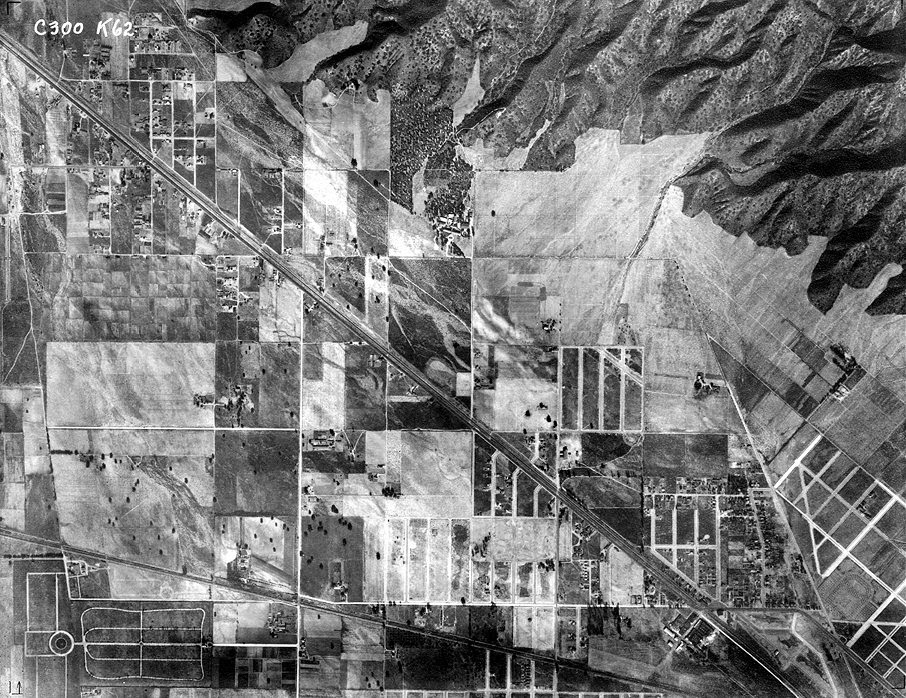In 1980 the French intellectual
Michel de Certeau wrote about what it was like to look down on the streets of
Manhattan from the 110th floor of the World Trade Center. De Certeau died before
those towers took on the meanings that they have had since 9/11, 2001. But his
point wasn't about those towers in particular. He thought that the “pleasure”
of looking down on the world from a great height was due to the way that it
freed you from the pulsating and ultimately unknowable hubbub taking place at
ground level. The view from above was the God-like perspective which rendered
the world readable at the cost of our separation from it. Cartographers, city
planners, bureaucrats, and administrators viewed the world in this way because
it abstracted populations and landmasses so as to render them knowable,
manageable, and malleable.
There is pleasure in aerial
photography and it’s hard not to see this as connected to its power to
abstract. Aerial photographs have a special kind of beauty because they both
register the world and offer us a view of that world that most of the time is
unavailable to us. We find it hard to connect the photographs to a world that
we know: much easier to enjoy the patchwork, the shapes, the lines cut by
rivers or roads. That this perspective has been associated with death, with
killing is of course unavoidable. The Orson Wells character in The Third Man justifies his racketeering
in dodgy pharmaceuticals with the view from the top of a Ferris-Wheel in Vienna. “Look down
there” he says “Would you really feel any pity if one of those dots stopped
moving for ever? If I said you can have twenty thousand pounds for every dot
that stops, would you really, old man, tell me to keep my money - or would you
calculate how many dots you could afford to spare?”
In a book of aerial photography
that was published in 1953 (Our World
from the Air: An International Survey of Man and his Environment) a
foreword claims that the twentieth century is the century of the air in the
same way that the 19th century was the century of the railway. Because the echo
of the Second World War was still reverberating loudly it at once recognises
that mechanical flight had allowed humans to drop thousands and thousands of bombs
on each other, but wanted to push the reader into thinking about how aerial
photography could be used by “the geologist, the archaeologist, the
town-planner, the sociologist”.
Today when so many more people
have had the experience of mechanical flight, aerial photography still offers
an uncanny vision of the world. The view of the world you get from your budget
airline passenger seat is never really vertical (unless something has seriously
gone wrong) and is always mediated by the slightly cloudy double-glazing of the
tiny windows. Aerial photographs have a calmness that is never available in the
cramped seating of economy class.
They seems to speak more readily
of some of the experiences of the young flyers who became pilots during the
Second World War:
The physically amazing thing
about flying, after the speed impression of taking off and low flying, is that
as you gain height the sense of motion drops away. It’s nothing like looking
out of the railway carriage and seeing the blurry silver worms zipping past or
the ritual nodding of telegraph lines. It is impressively stable and still up there
and this is the important point, the world is laid out for you in unfamiliar
terms… the visual field is flattened more after the plan view of the microscope
section than the elevation that everyday seeing is accustomed to.
This is the artist Nigel Henderson remembering his
experience of flying. It was an experience that went from enormous pleasure to
nerve-wracking fear. However familiar it may become, and however it is used for
instrumental ends, the view from above is also always vertiginous and discombobulating.
A god-like view is the view of someone who has no place. The view from above is
also the view of someone falling to earth.

No comments:
Post a Comment